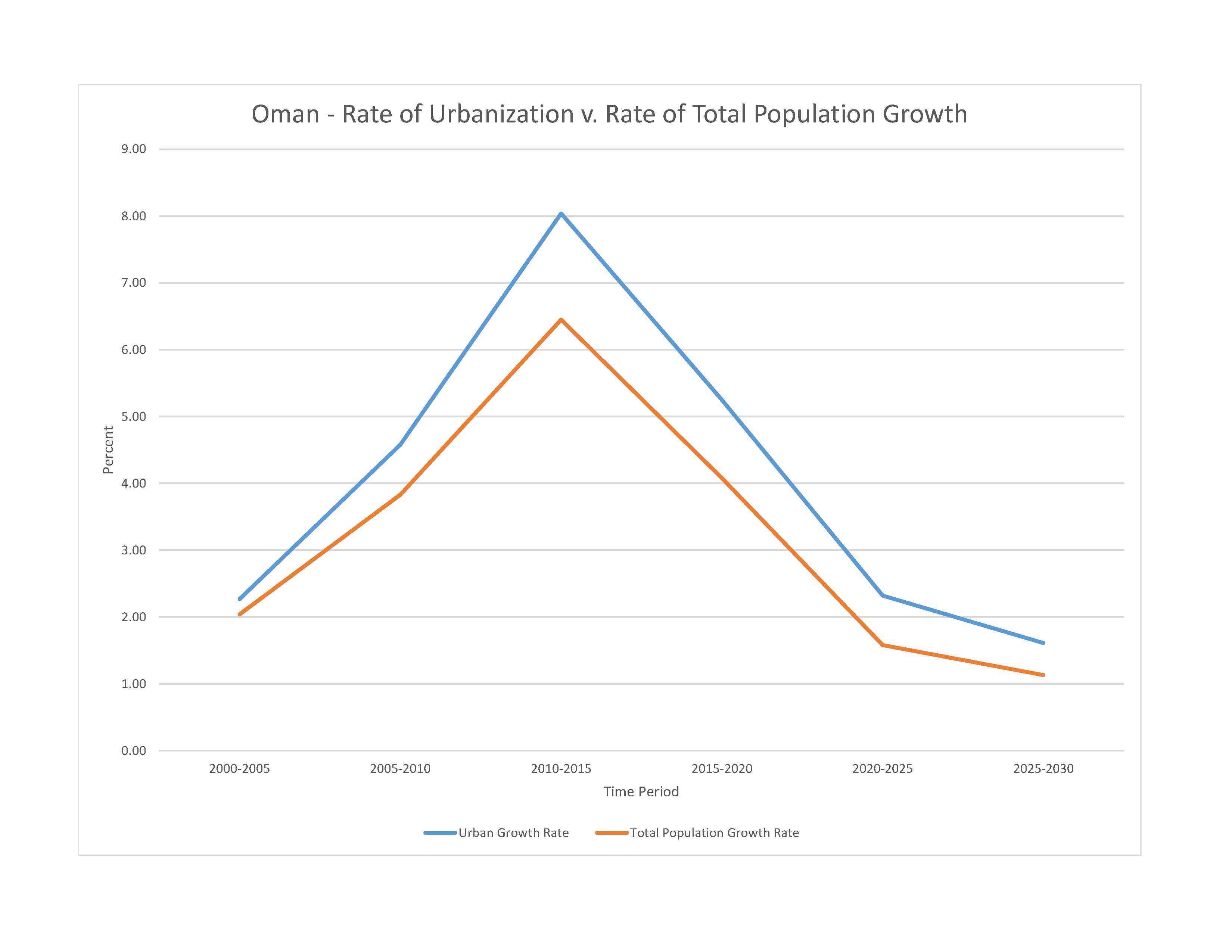
limited natural freshwater resources; high levels of soil and water salinity in the coastal plains; beach pollution from oil spills; industrial effluents seeping into the water tables and aquifers; desertificaiton due to high winds driving desert sand into arable lands
party to: Biodiversity, Climate Change, Climate Change-Kyoto Protocol, Climate Change-Paris Agreement, Comprehensive Nuclear Test Ban, Desertification, Endangered Species, Hazardous Wastes, Law of the Sea, Marine Dumping-London Convention, Ozone Layer Protection, Ship Pollution, Wetlands, Whaling
signed, but not ratified: none of the selected agreements
dry desert; hot, humid along coast; hot, dry interior; strong southwest summer monsoon (May to September) in far south
agricultural land: 4.7% (2018 est.)
arable land: 0.1% (2018 est.)
permanent crops: 0.1% (2018 est.)
permanent pasture: 4.5% (2018 est.)
forest: 0% (2018 est.)
other: 95.3% (2018 est.)
urban population: 88.4% of total population (2023)
rate of urbanization: 2.32% annual rate of change (2020-25 est.)

0% of GDP (2018 est.)
0% of GDP (2018 est.)
particulate matter emissions: 34.88 micrograms per cubic meter (2019 est.)
carbon dioxide emissions: 63.46 megatons (2016 est.)
methane emissions: 5.6 megatons (2020 est.)
municipal solid waste generated annually: 1,734,885 tons (2014 est.)
Arabian Aquifer System
municipal: 130 million cubic meters (2020 est.)
industrial: 240 million cubic meters (2020 est.)
agricultural: 1.55 billion cubic meters (2020 est.)
1.4 billion cubic meters (2020 est.)
NOTE: The information regarding Oman on this page is re-published from the 2024 World Fact Book of the United States Central Intelligence Agency and other sources. No claims are made regarding the accuracy of Oman 2024 information contained here. All suggestions for corrections of any errors about Oman 2024 should be addressed to the CIA or the source cited on each page.
This page was last modified 04 May 24, Copyright © 2024 ITA all rights reserved.